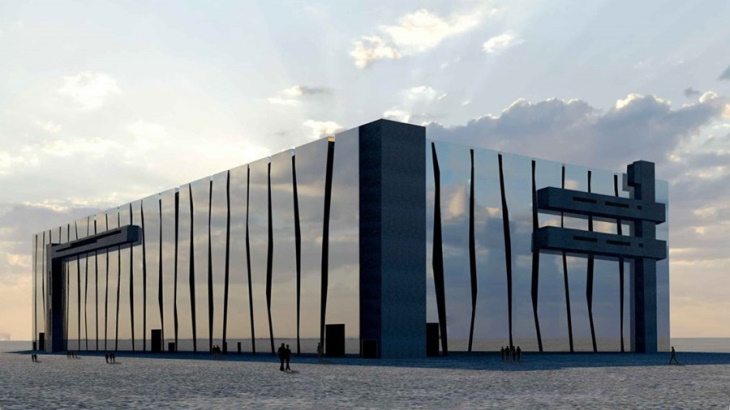Nuclear Energy
A community for nuclear energy enthusiasts.
Almost precisely 11 months ago, I started this Lemmy community as a way for people on nuclear reddit to find a new home. That didn't exactly turnout the way I thought. But despite that, today we're the biggest nuclear energy Lemmy community around!
I hope with this milestone we can build a more vibrant community with more people starting discussions and commenting more. Please share far and wide.
I'll keep posting daily updates. If you like to support what I do, please consider a donation.
If you'd like to support the community host, buy him a coffee!
On we go! ⚛️

Might be cool to setup a post on other nuclear communities, websites and accounts. Please share your links! I'll update this post ☺️
Reddit:
- https://www.reddit.com/r/NuclearPower/
- https://www.reddit.com/r/nuclear/
- https://www.reddit.com/r/fusion/
Discord:
- Socialists for nuclear energy: https://discord.com/invite/xSCEZxr
- Go nuclear now: https://discord.gg/3mgzWKyB3e
- Nuclear science and engineering: https://discord.gg/dPDWyuGJgP
Mastodon:
Websites:
- https://collectifission.nl - leftwingers for nuclear
- https://replanet.ngo - an international network of ecomodernists
- https://de.nucleopedia.org/ - German language nuclear wiki
Apparently no nuclear energy community existed just yet, so let this be the first 🙂
Some initial rules:
- Follow the rules of this instance:
- No bigotry - including racism, sexism, ableism, homophobia, transphobia, or xenophobia.
- Be respectful, especially when disagreeing. Everyone should feel welcome here.
- No porn.
- No Ads / Spamming.
-
On the solar/wind vs nuclear debate: let's be clear that we need all technologies to get to zero carbon emissions. Debate is allowed though.
-
If you open a topic for debate, participate in it. No one is interested in one sided hot takes and they'll be removed.
Source: https://www.world-nuclear-news.org/Articles/UK-justification-decision-sought-for-Rolls-Royce-S
The Nuclear Industry Association (NIA) has applied to the UK government for a justification decision for Rolls-Royce SMR's small modular reactor, a decision required for the operation of a new nuclear technology in the country. It marks the first ever application for justification of a UK reactor design.
UK regulations require that any new practice that produces ionising radiation is justified by an evaluation of the potential benefits and the potential detriments.
"Our application makes the case that the benefits of clean, firm, flexible power from the reactor would far outweigh any potential risks, which are in any event rigorously controlled by robust safety features, including passive safety systems, built into the design, in line with the UK's regulatory requirements," the NIA said. "The application also demonstrates that the reactor design would support nuclear energy's contribution to a stable and well-balanced electricity grid, which is essential to reduce consumer bills and maintain economic competitiveness."
The government has confirmed that the application has been accepted for consideration, and the Department for Environment, Food and Rural Affairs (DEFRA) will support the Secretary of State in their role as the justifying authority responsible for the justification decision. DEFRA will now conduct a process of internal review and consultation with a number of statutory consultees.
The NIA noted that a justification decision is one of the required steps for the operation of a new nuclear technology in the UK, but it is not a permit or licence that allows a specific project to go ahead. "Instead, it is a generic decision based on a high-level evaluation of the potential benefits and detriments of the proposed new nuclear practice as a pre-cursor to future regulatory processes," it added.
The NIA, as the representative body of the UK civil nuclear industry, often makes justification applications, because justification is a generic decision that can be relied upon by anyone and are not personal to individual reactor vendors or project developers. The NIA has previously applied for justifications for Hitachi's Advanced Boiling Water Reactor, Westinghouse's AP1000 and Framatome's EPR. In April this year, it applied for a justification decision for Newcleo's Italian-designed lead-cooled fast reactor, the LFR-AS-200.
"Rolls-Royce SMR's design, like other SMRs, offers huge possibilities for the UK to revive our industrial capabilities and deliver low-carbon energy for net-zero and energy security," said NIA Chief Executive Tom Greatrex. "We are delighted to support this step to get the design approved in its home country.
"It is essential that our nuclear renaissance is made in Britain, so the new government should ensure that we deploy enough SMR designs to justify investment in the UK supply chain to deliver them."
Helena Perry, Rolls-Royce SMR’s Safety and Regulatory Affairs Director, said: "As the UK's most advanced SMR design, today's submission for regulatory justification is another important step to ensure that we can continue to move at pace towards deployment in the UK.
"Each Rolls-Royce SMR 'factory-built' nuclear power plant will provide enough clean, affordable, electricity to power a million homes for 60+ years - delivering energy security, enabling net-zero and making a transformational contribution to the UK economy. Rolls-Royce SMR remains on track to complete Step 2 of the Generic Design Assessment by the nuclear industry's independent regulators and move immediately into the third and final step this summer."
The Rolls-Royce SMR is a 470 MWe design based on a small pressurised water reactor. It will provide consistent baseload generation for at least 60 years. 90% of the SMR - about 16 metres by 4 metres - will be built in factory conditions, limiting on-site activity primarily to assembly of pre-fabricated, pre-tested, modules which significantly reduces project risk and has the potential to drastically shorten build schedules.
It is one of six SMR designs selected in October by Great British Nuclear on a shortlist for the UK's SMR selection competition and one of the five vendors to submit a bid by the 8 July deadline. The aim is for a final investment decision in two or three of the designs to be taken in 2029.
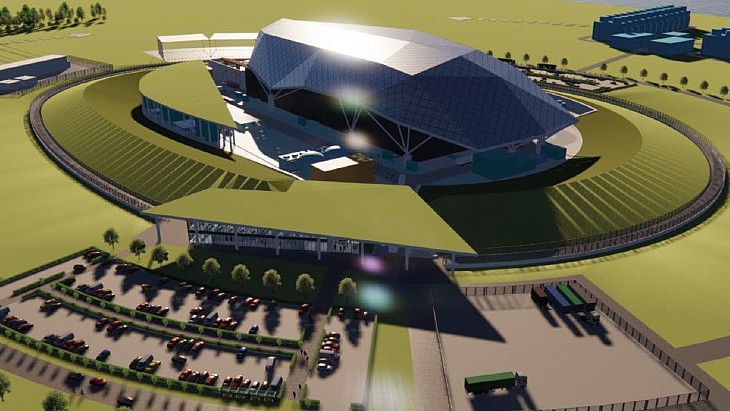
Source: https://www.world-nuclear-news.org/Articles/RWE-permitted-to-dismantle-Gundremmingen-plant
German utility RWE announced it has received the third and final licence from the Bavarian State Ministry for the Environment and Consumer Protection to decommission and dismantle the former Gundremmingen nuclear power plant.
The 1284 MWe Gundremmingen B boiling water reactor (BWR) in southern Germany was disconnected from the grid on 31 December 2017 after 33 years of operation. Gundremmingen C - a 1288 MWe BWR - permanently shut down on 31 December 2021.
The licence for dismantling unit B according to the Atomic Energy Act was granted by the Bavarian State Ministry of the Environment and Consumer Protection in March 2019; the licence for dismantling unit C in May 2021.
"Since then, several thousand tonnes of material have been removed from the two reactor buildings, processed and mostly returned to the recycling cycle," RWE said. "The third permit that has now been granted covers the dismantling of all plant components that were not the subject of the previous permits."
RWE said the Bavarian State Ministry for the Environment and Consumer Protection issued the final licence on 28 May.
"This means that all the prerequisites for the dismantling target set for the mid/late 2030s, namely the release of the plant from nuclear regulatory supervision, are now in place," the company said.
"The granting of the permit enables us to continue the immediate dismantling in accordance with the current Atomic Energy Act and is an important milestone in our dismantling project," said Gundremmingen Plant Manager Heiko Ringel. "The rapid and safe dismantling is guaranteed by a highly-motivated and technically experienced team made up of our own staff and partner companies.
"All work is subject to monitoring by the supervisory authority, which accompanies and supervises the dismantling with the support of various independent experts. Plant safety, occupational safety and health protection have the highest priority in all activities."
In December 2021, RWE awarded a contract to Westinghouse to dismantle the two reactors at the Gundremmingen plant. Under the contract, Westinghouse will dismantle and pack the reactor pressure vessels, including the associated internals, the fuel element storage racks and adjacent concrete shielding structures in units B and C of the Gundremmingen plant. The work is expected to be completed in 2030.
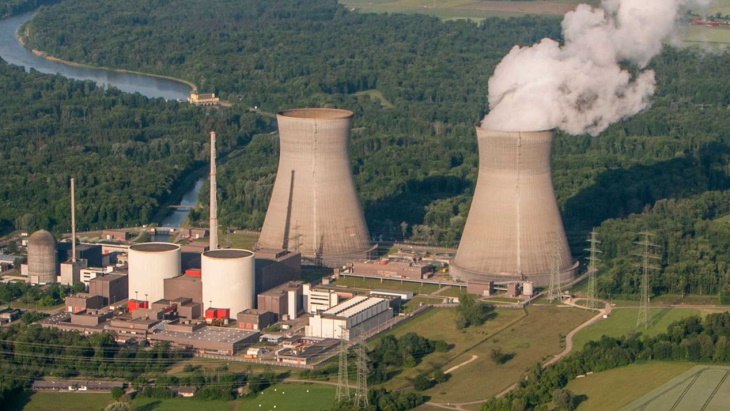
Source: https://www.world-nuclear-news.org/Articles/Further-Norwegian-site-identified-for-SMRs
Norsk Kjernekraft has decided to initiate work on the impact assessment of a plot of land in Øygarden municipality, west of Bergen, to assess the possibility of establishing a nuclear power plant comprising up to five small modular reactors.
The company will compile a report, which will be sent to the Ministry of Oil and Energy for an assessment. The ministry will send the report out for consultation, and then the municipality, residents and industry will be able to make their comments. If approved by the ministry, the report and input will form the basis for an impact assessment.
The plot of land in question is adjacent to the Kollsnes industrial area. The 250-acre site is owned by landowner and former mayor of Øygarden, Rolv Svein Rougnø. Rougnø has entered into a letter of intent with Norsk Kjernekraft and the agreement outlines that the site can be acquired for use in the construction of small modular reactor (SMR) power plants.
Norsk Kjernekraft said the site has space for five SMRs, each with a generating capacity of 300 MWe. This means that the site has the potential for generating 12.5 TWh per year, corresponding to almost 10% of Norway's current total electricity consumption.
"This is another important milestone," said Norsk Kjernekraft CEO Jonny Hesthammer. "There are a great many municipalities that are now positive about investigation work being carried out. In this way, concrete knowledge can be acquired which can be used as a basis for decisions about whether nuclear power can be built in the municipality in the future. This must of course be done in consultation with both residents and municipal politicians. Without these being in place, there will be no nuclear energy in the municipality."
Norsk Kjernekraft aims to build, own and operate SMR power plants in Norway in collaboration with power-intensive industry. It says it will prepare licence applications in accordance with national regulations and international standards. It will follow the International Atomic Energy Agency's approach for milestones, and focus on what creates value in the early phase. Financing will take place in collaboration with capital-strong industry and solid financial players.
The company entered into an agreement of intent last year on the investigation of nuclear power with several municipalities.
In June 2023, it signed a letter of intent with TVO Nuclear Services - a consulting company wholly owned by Finnish utility Teollisuuden Voima Oyj - to jointly investigate the deployment of SMRs in Norway. The cooperation included the assessment of the suitability and effectiveness of the development of nuclear power in the Norwegian municipalities of Aure, Heim, Narvik and Vardø.
In November, it submitted a proposal to the Ministry of Oil and Energy for an assessment into the construction of a power plant based on multiple SMRs in the municipalities of Aure and Heim. A corresponding report is in the process of being finalised for Vardø municipality.
A new company, Halden Kjernekraft AS, has also been founded by Norsk Kjernekraft, Østfold Energi and the municipality of Halden to investigate the construction of a nuclear power plant based on SMRs at Halden, where a research reactor once operated.
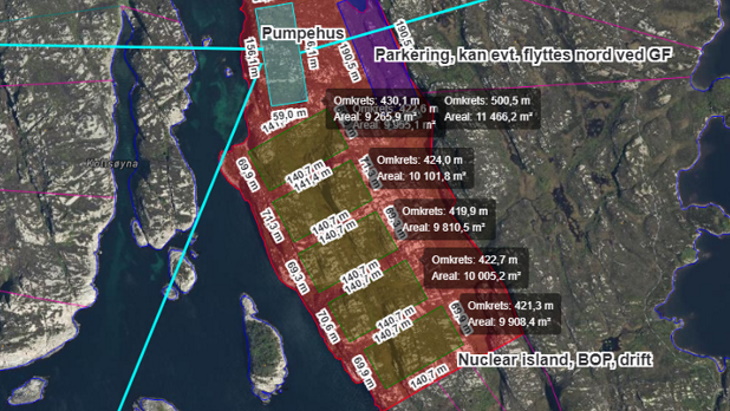
Source: https://www.world-nuclear-news.org/Articles/Google,-Microsoft-and-Nucor-team-up-on-clean-energ
North American steel manufacturer Nucor Corporation and US tech giants Google and Microsoft Corporation are to work together across the electricity ecosystem to develop new business models and aggregate their demand for advanced clean electricity technologies, including advanced nuclear.
These models, they say, will be designed to accelerate the development of first-of-a-kind and early commercial projects, including advanced nuclear, next-generation geothermal, clean hydrogen, long-duration energy storage and others.
As a first step, the companies will issue a Request for Information in several US regions for potential projects in need of offtake, and encourage technology providers, developers, investors, utilities and others to get involved.
By developing new commercial structures and aggregating demand from three of the world's largest energy buyers, this approach aims to reduce the risks for utilities and developers considering early commercial projects and enable the investments that are needed - ultimately helping to bring these projects online by the early 2030s and reducing technology costs through repeated deployment.
The companies will initially focus on proving out the demand aggregation and procurement model through advanced technology pilot projects in the USA. The companies will pilot a project delivery framework focused on three enabling levers for early commercial projects: signing offtake agreements for technologies that are still early on the cost curve; bringing a clear customer voice to policymakers and other stakeholders on broader long-term ecosystem improvements; and developing new enabling tariff structures in partnership with energy providers and utilities.
In addition to supporting innovative technologies that can help decarbonise electricity systems worldwide, the partners say this demand aggregation model will bring clear benefits to large energy buyers. Pooling demand enables buyers to offtake larger volumes of carbon-free electricity from a portfolio of plants, reducing project-specific development risk, and enables procurement efficiencies and shared learnings.
To ensure that the project delivery framework that they develop is transparent and scalable, Google, Microsoft and Nucor will share their lessons learned and the roadmap from their first pilot projects, and encourage other companies to consider how they can also support advanced clean electricity projects.
In May last year, Nucor signed a memorandum of understanding with NuScale Power to explore the deployment of NuScale's VOYGR small modular nuclear reactor (SMR) power plants at Nucor's scrap-based Electric Arc Furnace (EAF) steel mills. In addition, NuScale is studying the feasibility of siting a manufacturing facility for NuScale Power Modules near a Nucor facility. In April 2022, Nucor - with operating facilities in the USA, Canada and Mexico - committed to a USD15 million private investment in public equity in NuScale Power.
In 2022, Constellation Energy announced it was collaborating with Microsoft on the development of an energy matching technology using real-time, data-driven carbon accounting solution and hour-by-hour regional tracking to match customer needs with local carbon-free energy sources. Last year, Microsoft agreed a new hourly energy-matching agreement with Constellation that harnesses the environmental attributes of nuclear to put the data centre in Boydton, Virginia "very close" to the goal of 100% carbon-free operation.
Microsoft has also signed an agreement with fusion energy developer Helion Energy for the provision of electricity from its first fusion power plant.

Source: https://www.world-nuclear-news.org/Articles/Fourth-Barakah-unit-receives-operating-licence
The United Arab Emirates' nuclear regulator has issued the licence to Nawah Energy Company, clearing the way for commissioning and commercial operation of the unit and marking a historic moment as the UAE realises its nuclear energy vision.
The Federal Authority for Nuclear Regulation (FANR) said it had reached its decision to issue the licence after conducting a thorough assessment of the application documentation, conducting robust regulatory oversight and inspections in the areas of safety, security and safeguards. It also assessed Nawah's organisational and manpower readiness, and ensured that Nawah was in compliance with all regulatory requirements.
Construction of the fourth Korean-designed APR-1400 unit at Barakah, in the Al Dhafra region of Abu Dhabi Emirate began in July 2015, three years after work began on the first Barakah unit. The first three units are now fully operational under FANR's regulatory oversight.
The UAE embarked on its plan to implement a nuclear energy programme in 2008 when its government made the decision to build and operate a nuclear power plant to provide 25% of the country's electricity needs, diversifying its energy sources and supporting its long-term energy vision and net zero goals. Construction of the first unit began in 2012, and Barakah 1 was connected to the grid in 2020.
"Today marks a historic moment for the UAE, where it realised its vision that started 15 years ago in developing the-first-in-the-region peaceful nuclear energy programme," Hamad Al Kaabi, the UAE's permanent representative to the International Atomic Energy Agency and deputy chairman of FANR's Board of Management said. "The success of the UAE Nuclear Energy Programme and the ability to deliver it within a record span of time, adhering to the best international nuclear safety, security and non-proliferation standards, made the country a role model for many nations who are embarking on developing a nuclear energy programmes."
FANR has certified 215 Reactor Operators and Senior Reactor Operators - including 78 who are Emiratis - who are qualified to operate the control rooms of the nuclear power plant, FANR Director General Christer Viktorsson said.
"The review of the operating licence application for Unit 4 was conducted by a team consisting of 90% Emirati nuclear experts. This indicates the success of FANR's strategy in building the capability and skills of Emiratis to regulate the nuclear sector and ensure its safe operation," he added.
Nawah can now begin the commissioning phase to prepare for commercial operation, during which FANR will carry out around-the-clock inspection at the plant to ensure the nuclear fuel load and testing processes are completed according to regulatory requirements, Viktorsson said. When the plant enters commercial operation the regulator will assume an oversight role.
The Barakah plant is owned by the Emirates Nuclear Energy Corporation (ENEC) and operated by Nawah. Barakah 4's operating licence has a duration of 60 years.
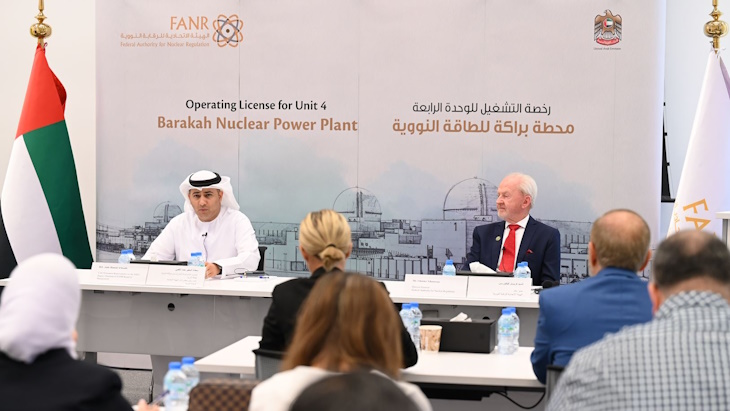
Contracts could be finalised within next year and new unit ready for trial operation in 2036.
The company overseeing the project to build new nuclear power plants at the Dukovany site in the Czech Republic announced on Tuesday (31 October) it had received final bids from three companies.
Elektrárna Dukovany II (Edu II), a wholly owned subsidiary of state utility ČEZ, said it had received final bids for the construction of a new nuclear power plant at Dukovany from US-based Westinghouse, France’s EDF and South Korea’s Korea Hydro & Nuclear Power (KHNP). All three submitted initial bids in November 2022.
Edu II said the suppliers had submitted a binding bid for Dukovany-5 and non-binding bids for a further three units. Those units would be Dukovany-6 and two additional units at the Temelín site, Temelín-3 and -4.
Westinghouse and EDF both said in statements that their bids propose construction of one unit at Dukovany with the potential for a second unit there and two additional units at Temelín.
Both companies are proposing Generation III+ reactor technology – Westinghouse its AP1000 and EDF its EPR1200. KHNP’s proposed technology is likely to be the APR1400.
Companies had until 11:00 on 31 October to submit their bids.
China and Russia Excluded
State-owned companies from China and Russia were excluded from bidding on security grounds.
Edu II will now evaluate the bids from “economic, commercial, and technical points of view” and submit an evaluation report to the Ministry of Industry and Trade and then to the Czech government for final approval.
Contracts could be finalised within the next year and Dukovany-5 ready for trial operation in 2036.
The new unit will be built next to the existing power station and will eventually replace some of the existing facility’s capacity when older units are retired. The first of four existing units at Dukovany began commercial operation in 1985.
The Czech Republic has six commercially operational reactor units: four Russia-designed VVER-440 units at Dukovany and two larger VVER-1000 units at Temelín. According to the International Atomic Energy Agency, in 2022 the six units provided 36.7% of the country’s electricity production.
Construction of a first new unit at Dukovany could begin in 2029. The industry ministry has said it would be the biggest investment in the modern history of the Czech Republic, costing around €6bn ($6.7bn).
A second new unit at Dukovany has a target operation date not earlier than the mid-2040s. This would coincide with the retirements of the existing Dukovany VVERs.
ČEZ has also said it is planning to deploy small modular reactors with the first to go online in 2032 at Temelín. It said in March it had tentatively identified two preferred sites for additional units.
According to ČEZ, support for the development of nuclear energy in the Czech Republic has increased by 7% over the past year to 72%, the highest since 1993. The high support is mainly due to the current energy crisis, the company said.
Source: https://www.world-nuclear-news.org/Articles/Construction-of-fusion-materials-testing-facility
Construction has started in Granada, Spain, of the International Fusion Materials Irradiation Facility-Demo Oriented Neutron Source (IFMIF-DONES) project. The facility will provide a fusion‐like neutron source for the qualification of the materials to be used in a fusion power plant.
The ITER Organisation noted the high kinetic energy of fast neutrons produced in a deuterium-tritium fusion reaction is converted into heat as they pass through the walls of the tokamak, allowing for significant power generation. However, those same high-energy neutrons, over a period of sustained bombardment, cause material degradation through the process of transmutation.
The level of neutron irradiation planned for demonstration fusion power plants (DEMOs) has never been tested. In order to build DEMOs out of materials that can withstand such harsh bombardment, developers are looking to neutron sources as a way to mimic fusion conditions for materials testing.
The IFMIF-DONES materials testing facility will simulate DEMO-like conditions for potential structural materials. It will use a particle accelerator to produce a continuous-wave deuteron (D+) beam aimed at a target made of a liquid lithium curtain. The interaction between deuterium and lithium will generate enough free neutrons to simulate the planned neutron flux over time of Europe's DEMO, which is being designed by the DEMO Central Team at EUROfusion. Directly behind the lithium target will be the high-flux test module, which will house capsules of material samples for neutron irradiance testing.
The facility will produce a 125 mA deuteron beam, accelerated up to 40 MeV and shaped to have a nominal cross section in the range from 100 mm x 50 mm to 200 mm x 50 mm, impinging on a liquid lithium target 25 mm thick cross‐flowing at about 15 m/s in front of it.
Construction of the IFMIF-DONES facility is expected to take about 10 years to complete. Subsequently, the scientific and technological exploitation will last at least 30 years.
"A key use of the IFMIF-DONES facility will be the testing of EUROFER, the reduced activation steel alloy currently intended to serve as DEMO's first wall structural material," said IFMIF-DONES Director Angel Ibarra. "It is important to do these experiments in a fusion-like environment as soon as possible to validate this material for Europe's DEMO. We'll be testing hundreds of samples of EUROFER and EUROFER-like alloys under varying conditions of neutron and heat flux to gain a fuller understanding of its mechanical properties.
"Both success stories and lessons learned from the ITER Project's last 15 years can help optimise IFMIF-DONES operations as the facility enters its construction phase," Ibarra added. "Also, some technologies already developed for ITER will also be needed in our project, and perhaps the development process can be streamlined."
The mission of the DONES programme is to develop a database of fusion‐like neutron irradiation effects in the materials required for the construction of DEMOs for benchmarking of radiation response of materials.
